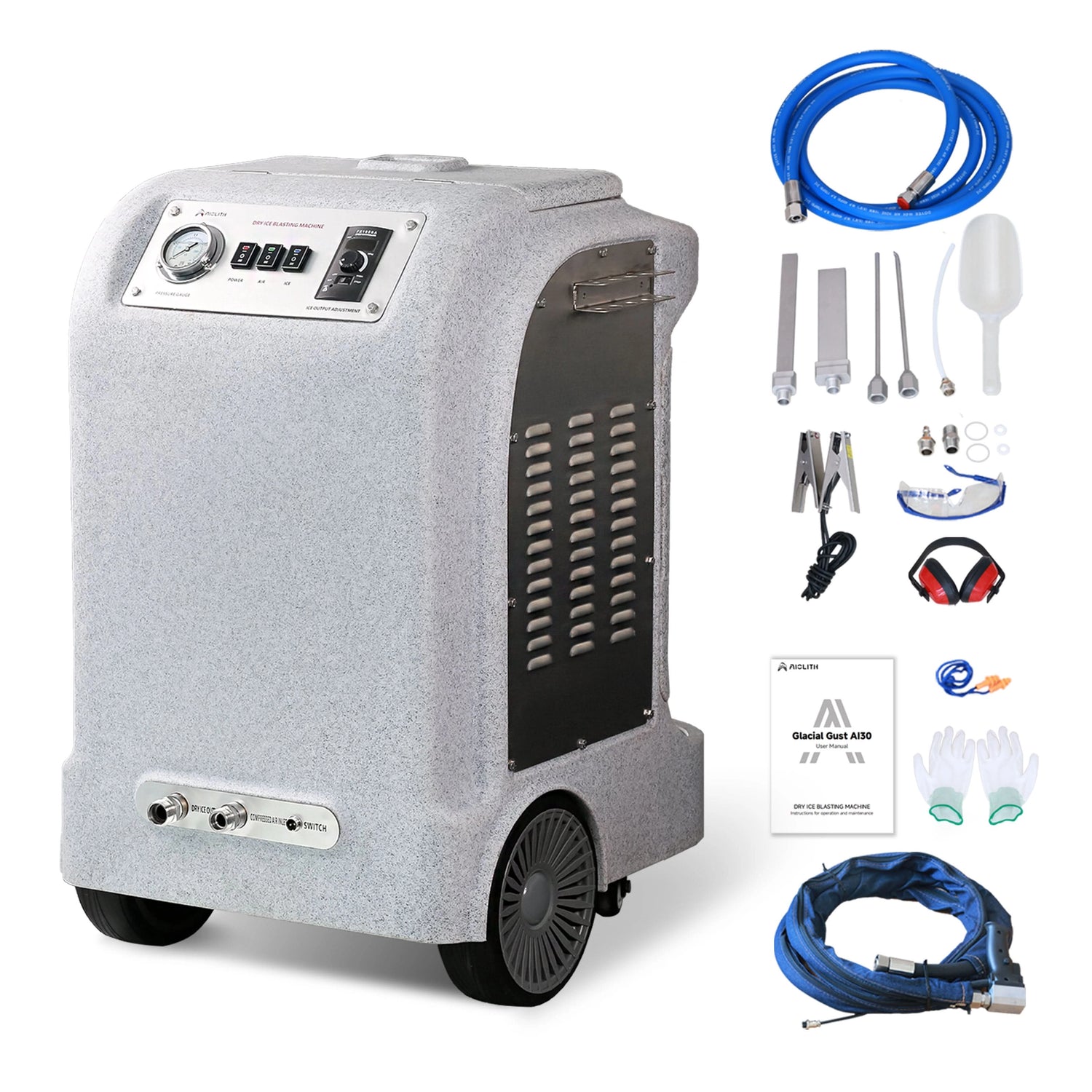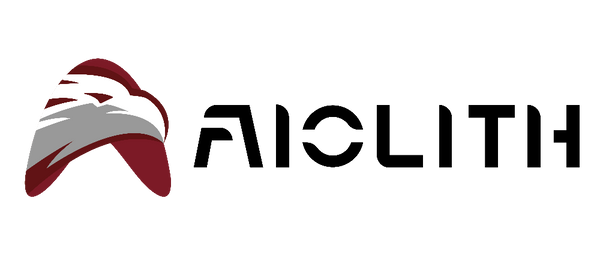What Do Professionals Clean Floors With? 9 Proven Tools and Why Aiolith Scrubbers Are the Gold Standard for Businesses
Share
The Pain Point: Why Standard Cleaning Often Fails
Facility managers and homeowners often ask, “Why don’t my floors look as clean as when professionals do it?” The answer lies in equipment choice and cleaning methods. Professionals rely on specialized machines and detergents, not just mops and buckets.
The Centers for Disease Control and Prevention (CDC, 2020) emphasizes that proper floor cleaning is essential to prevent bacterial spread and slip hazards in both residential and commercial environments (CDC Source).
For businesses managing large, high-traffic floors, relying solely on mopping is ineffective. This is where professional-grade tools like Aiolith commercial scrubbers excel, offering both deep cleaning and efficiency.
Top 9 Tools Professionals Use to Clean Floors
1. Dust Mops and Sweepers
Professionals always begin by removing surface debris to prevent mud-like streaks during wet cleaning.
2. Microfiber Mops
Unlike cotton mops, microfiber fibers trap dirt and bacteria more effectively.
3. Neutral pH Cleaners
Safe for most surfaces, they prevent residue buildup and protect finishes.
4. Steam Cleaners
Used in smaller spaces, steam lifts dirt without harsh chemicals.
5. Rotary Machines
Great for buffing and polishing hard floors but not efficient for very large spaces.
6. Wet/Dry Vacuums
Used to extract dirty water quickly, reducing slip risks.
7. Floor Scrubbing Pads and Brushes
Attached to machines, these help remove stains and scuff marks.
8. Commercial-Grade Disinfectants
Essential in healthcare and food service to eliminate pathogens.
9. Aiolith Floor Scrubbers
The industry standard for large facilities, combining scrubbing, water recovery, and quick-dry technology for safe, spotless floors.
Why Professionals Prefer Aiolith Scrubbers
Aiolith scrubbers stand out because they integrate multiple functions in one machine:
- Mechanical scrubbing removes embedded dirt.
- Low-foam detergent systems prevent residue.
- Water recovery technology extracts dirty water instantly.
- Quick-dry capability minimizes downtime and slip risks.
This makes them ideal for hospitals, warehouses, shopping malls, schools, and airports, where both cleanliness and safety are non-negotiable.
Comparison of Professional Cleaning Methods
| Method | Effectiveness | Best Use Case | Limitations |
|---|---|---|---|
| Dust Mop/Sweeper | Low | Pre-cleaning before wet mopping | Doesn’t sanitize |
| Microfiber Mop | Medium | Small office or home floors | Labor-intensive in large spaces |
| Neutral pH Cleaner | Medium–High | Daily floor maintenance | Needs manual application |
| Steam Cleaner | High | Kitchens and bathrooms | Not scalable for large facilities |
| Rotary Buffer Machine | High | Polishing and finishing | Doesn’t remove deep dirt |
| Wet/Dry Vacuum | High | Post-cleaning water removal | Requires additional scrubbing |
| Pads and Brushes | High | Targeted stain removal | Manual effort or attachment required |
| Commercial Disinfectants | Very High | Healthcare and food industries | Needs rinsing and proper handling |
| Aiolith Floor Scrubber | Very High (99% dirt removal) | Large commercial facilities | Higher upfront investment, but long-term savings |
Why Traditional Mopping Isn’t Enough
The Journal of Environmental Health (2019) found that traditional mopping often leaves behind 30–40% of surface dirt, making it less hygienic and less effective for high-traffic environments (Journal Link).
In contrast, professional machines like Aiolith scrubbers remove dirt and extract dirty water simultaneously, leaving floors clean and safe.
Health and Safety Considerations
According to the Health and Safety Executive (HSE, 2020), slips and trips are among the leading causes of workplace accidents, often caused by poorly cleaned floors (HSE Source).
Aiolith scrubbers address this by:
- Leaving floors dry within minutes
- Reducing chemical residue risks
- Maintaining consistent cleaning standards
Environmental Benefits of Professional Cleaning Machines
Overusing chemicals or water with manual cleaning increases waste. The European Chemicals Agency (ECHA, 2022) recommends automated scrubbers with eco-dosing systems to minimize environmental impact (ECHA Source).
Aiolith machines align with these recommendations by reducing both chemical and water consumption.
Best Practices for Professional-Grade Cleaning
- Sweep or vacuum before scrubbing.
- Use low-foam detergents designed for machines.
- Match brushes or pads to floor type (soft bristles for wood, harder brushes for concrete).
- Perform scheduled deep cleans for long-term floor care.
- Train staff on safe machine operation.
FAQs: What Do Professionals Clean Floors With?
Q1: Do professionals still use mops?
A: Yes, but mainly for small areas. For large facilities, machines like Aiolith scrubbers are preferred.
Q2: What’s the main advantage of Aiolith scrubbers?
A: They clean, extract dirty water, and dry floors in one step, saving time and labor.
Q3: Are scrubbers safe for all floor types?
A: With adjustable pressure and the right brushes, Aiolith scrubbers work on tile, vinyl, concrete, and sealed wood.
Q4: Do professionals use dish soap for cleaning floors?
A: No. Dish soaps create foam and residue. Professionals use neutral pH, low-foam detergents.
Q5: How do professionals ensure safety while cleaning?
A: By using quick-drying equipment and eco-friendly chemicals that reduce slip hazards.
Conclusion: The Professional Edge in Floor Cleaning
If you’ve ever wondered, “What do professionals clean floors with?”, the answer is clear: they use a combination of specialized tools and machines, with Aiolith floor scrubbers standing out as the most effective solution for commercial environments.
While mops and detergents may work in small settings, they fall short in efficiency, hygiene, and safety when compared to professional equipment. For spotless, safe, and sustainable results, Aiolith scrubbers remain the gold standard.
References
Centers for Disease Control and Prevention (CDC). (2020). Environmental cleaning and disinfection guidelines. Read here.
Journal of Environmental Health. (2019). Comparing manual vs. mechanical floor cleaning efficiency. Read here.
Health and Safety Executive (HSE). (2020). Preventing slips and trips at work. Read here.
European Chemicals Agency (ECHA). (2022). Cleaning product sustainability regulations. Read here.

